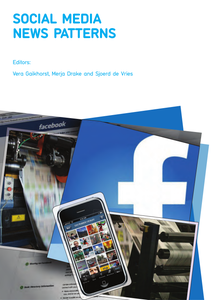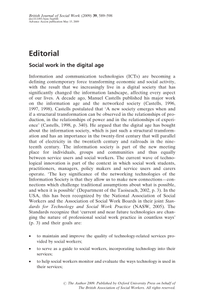This study explores the (characteristics of) social relationships and coping efforts that protect emerging adults from feeling lonely. The research question is ‘what do emerging adults need in order to not feel lonely?’. Semi-structured interviews with university students from the Netherlands (N = 29; 20–26 years) were conducted between November 2021 and February 2022. Thematic analysis was used to analyse the data. All participants had experiences with loneliness. In order to not feel lonely, participants needed functional, available social relationships with specific others. Quantitative and qualitative characteristics of social relationships were discussed. Furthermore, participants needed to know and accept themselves and to have realistic expectations about others. In terms of coping, participants made active efforts to improve social relationships and altered expectations about others. The results are discussed in line with social discrepancy theory, coping theory, and characteristics of the life phase of emerging adulthood. Implications for loneliness interventions are discussed.
LINK
Although the contribution of social entrepreneurship to social innovation is becoming increasingly acknowledged in theory and practice, it is less apparent in relation to social work. This chapter aims to contribute to a better understanding of social entrepreneurship in relation to issues of social innovation and social work. We will do this by focusing in particular on work integration of vulnerable groups, one of the most dominant impact areas in which many social enterprises are active and which most directly relates to the traditional domain of social work. The chapter analyses specific examples from the UK and the Netherlands to discuss how social enterprises have contributed to systemic change in the social domain, and what its possible implications could be for the future of social work.
LINK
Dit artikel presenteert de resultaten van een discursief psychologische analyse van geruchtvorming op social media. De analyse van Twitterberichten die zijn geplaatst tijdens de zoektocht naar twee vermiste kinderen heeft tot doel inzicht te verwerven in de manier waarop geruchten zich ten tijde van crisissituaties op social media ontwikkelen. In this article we present the results of our analysis of rumour construction on social media from a discursive psychological perspective. The analysis of tweets during a search for two missing kids aims to provide insight into the way rumours develop on social media during a crisis situation, as well as the interactional and rhetorical aspects of rumour construction.
DOCUMENT

A social media architect is an appealing new profession that entails crossovers between communication and IT & Design. There are no study programmes for this job. Important questions are how to interest secondary school pupils for such a new job, and how to prepare them for these jobs or jobs that do not even exist today? This research aims to set an example by presenting a realistic job profile of a social media architect by linking the ‘21st century skills’ to the context in which he/she operates.
DOCUMENT

This research aims to contribute to a better understanding of strategic collaborations between work-integration social enterprises (WISEs) and for-profit enterprises (FPEs) with the joint objective to improve labour market opportunities for vulnerable groups. We find that most collaborations strive towards integration or transformation in order to make more social impact.
LINK
BACKGROUND: Loneliness is expected to become an even bigger social problem in the upcoming decades, because of the growing number of older adults. It has been argued that the use of social network sites can aid in decreasing loneliness and improving mental health. The purpose of this study was to examine whether and how social network sites usage is related to loneliness and mental health in community-dwelling older adults. METHOD: The study population included community-dwelling older adults aged 60 and over residing in the Netherlands (n = 626) collected through the LISS panel (www.lissdata.nl). Univariate and multivariate linear regression analyses, adjusted for potentially important confounders, were conducted in order to investigate the relation between social network sites usage and (emotional and social) loneliness and mental health. RESULTS: More than half of the individuals (56.2%) reported to use social network sites at least several times per week. Social network sites usage appeared unrelated to loneliness in general, and to emotional and social loneliness in particular. Social network sites usage also appeared unrelated to mental health. Several significant associations between related factors and the outcomes at hand were detected. CONCLUSION: In this sample, which was representative for the Dutch population, social network sites usage was unrelated to loneliness and/or mental health. The results indicate that a simple association between social network site usage and loneliness and mental health as such, cannot automatically be assumed in community-dwelling older adults.
LINK
Wereldwijd onderzoek: Hoe gebruiken nieuwsmedia social media? Jongeren lezen geen krant meer, ze kijken op hun smartphone die ze altijd bij de hand hebben. Binnen het lectoraat social media en reputatiemanagement van NHL hogeschool te Leeuwarden heeft een groep internationale studenten in 12 landen onderzoek gedaan. Hierbij hebben ze meer dan 150 social media sites bestudeerd van nieuws media. De resultaten maken deel uit van een internationaal onderzoek van NHL Hogeschool en Haaga Helia University. De onderzoeksvraag was: Wat speelt zich af in de nieuwsmedia? Persbureaus kunnen het overzicht gebruiken om hun social media te optimaliseren. En voor ieder die journalistiek een warm hart toedraagt is het interessante informatie over de nieuwsmedia in een overgangssituatie (2nd edition)
DOCUMENT

Inleiding op een themanummer van British Journal of Social Work over sociaal werk in de digitale samenleving.
DOCUMENT

This open access book states that the endemic societal faultlines of our times are deeply intertwined and that they confront us with challenges affecting the security and sustainability of our societies. It states that new ways of inhabiting and cultivating our planet are needed to keep it healthy for future generations. This requires a fundamental shift from the current anthropocentric and economic growth-oriented social contract to a more ecocentric and regenerative natural social contract. The author posits that in a natural social contract, society cannot rely on the market or state alone for solutions to grand societal challenges, nor leave them to individual responsibility. Rather, these problems need to be solved through transformative social-ecological innovation (TSEI), which involves systemic changes that affect sustainability, health and justice. The TSEI framework presented in this book helps to diagnose and advance innovation and change across sectors and disciplines, and at different levels of governance. It identifies intervention points and helps formulate sustainable solutions for policymakers, administrators, concerned citizens and professionals in moving towards a more just and equitable society.
MULTIFILE

In this paper we discuss the general approach and choices we made in developing a prototype of a social media monitor. The main goal of the museum monitor is to offer museum professionals and researchers better insight in the effects of their own social media usage and compare this with other actors in the cultural heritage sector. It gives researchers the opportunity to consider communication within the sector as whole. In the research project “Museum Compass” we have developed a prototype of a social media monitor, which contains data of current and historic online activities on Facebook, Twitter, YouTube, Foursquare and Flickr of all registered Dutch museums. We discuss – mostly in a practical sense – our approach for developing the monitor and give a few examples as a result of its usage.
DOCUMENT
